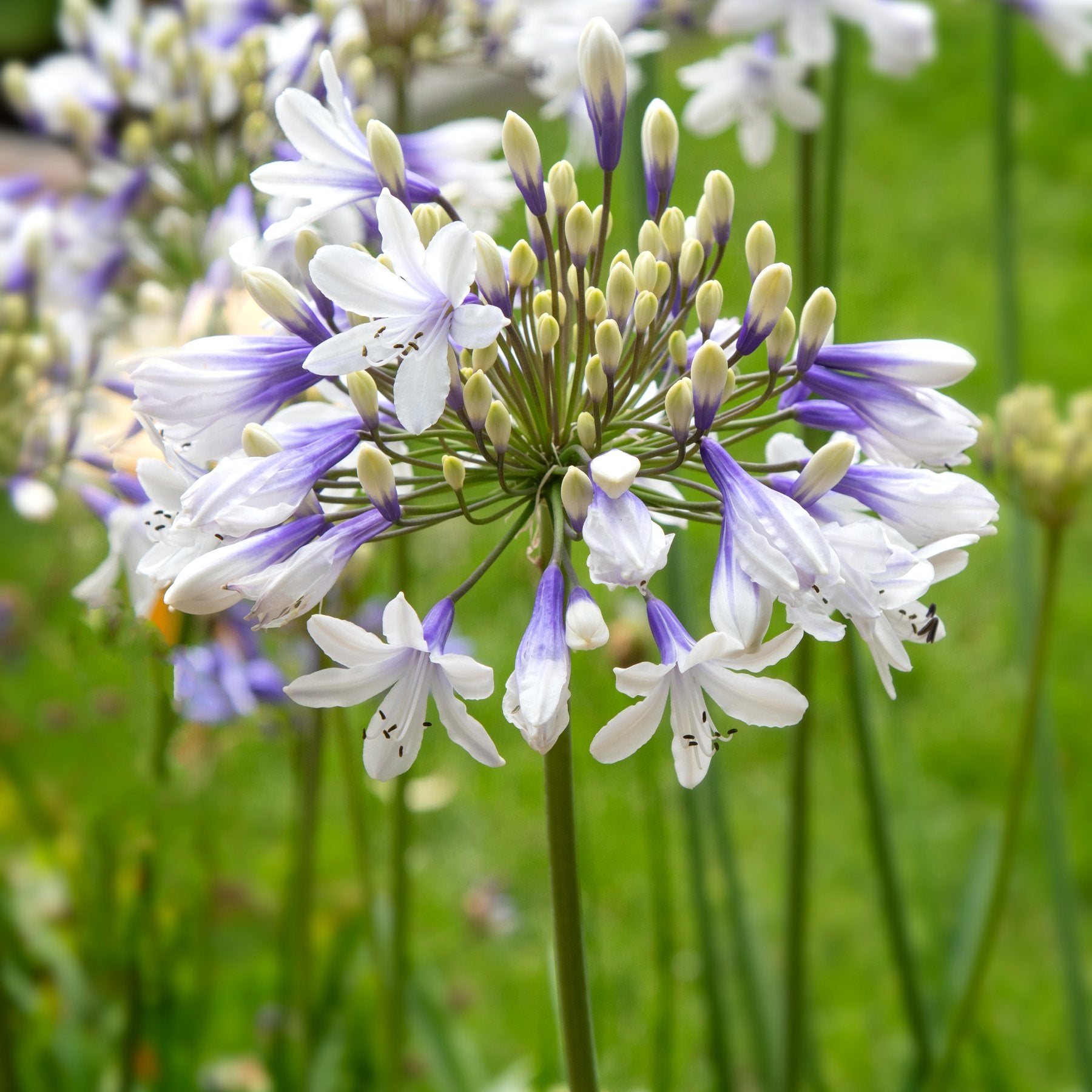Agapanthus Proliferation: Tips for Expanding Your Plant Collection
Agapanthus Proliferation: Tips for Expanding Your Plant Collection
Blog Article
Releasing the Secret to Successful Agapanthus Growing: Advice for a Flourishing Yard
In the world of horticulture, cultivating agapanthus effectively calls for a strategic method that incorporates numerous facets of plant treatment. By understanding the nuances of agapanthus growing, one can produce a setting where these plants thrive and bloom generously.
Planting Agapanthus: Ideal Practices
When planting Agapanthus, appropriate dirt prep work is crucial for ensuring successful development and growth of these gorgeous blossoms. Agapanthus, generally called Lily of the Nile or African lily, flourishes in well-draining soil with a slightly acidic to neutral pH level - Agapanthus. Prior to growing, it is critical to amend hefty clay dirts with raw material such as compost or peat moss to improve water drainage and provide important nutrients for the plants
To grow Agapanthus, select a location that obtains complete sunlight to partial shade, as this will certainly advertise healthy and balanced development and abundant flowering. Dig a hole two times the size of the plant's origin sphere and put the Agapanthus at the exact same deepness it was previously growing. Gently backfill the hole with soil, weighing down firmly to get rid of any air pockets around the roots.
Water the newly planted Agapanthus completely and remain to maintain the dirt evenly moist, specifically throughout the plant's energetic expanding period. Agapanthus. Applying a balanced fertilizer once a month can further support the plant's growth and blooming. By adhering to these finest methods for planting Agapanthus, you can develop a magnificent display screen of these fascinating flowers in your garden
Perfect Dirt Conditions for Agapanthus
For optimal development and flowering success of Agapanthus plants, making sure the dirt problems are perfect is essential. Agapanthus thrives in well-draining soil with a somewhat acidic to neutral pH level ranging from 6.0 to 7.0. This kind of soil enables ample water drain, avoiding waterlogging which can lead to root rot. To boost soil water drainage, take into consideration including raw material such as compost or peat moss when preparing the growing site. Moreover, Agapanthus favors dirt that is rich in nutrients, so incorporating a well balanced fertilizer throughout the growing period can promote healthy development and vibrant blossoms.

Watering and Fertilizing Tips
To make sure healthy and balanced development and vivid blooms, appropriate watering and fertilizing techniques are essential for effective Agapanthus growing. Agapanthus plants profit from regular watering, specifically throughout the expanding period.
When it concerns fertilizing Agapanthus, a balanced fertilizer with equivalent components nitrogen, phosphorus, and potassium can be applied in the spring to promote healthy and balanced growth and blooming. Slow-release plant foods are optimal for supplying nutrients slowly over an extended duration. Prevent over-fertilizing, as this can result in excessive vegetation growth at the expense of blossoms.
Furthermore, incorporating natural matter like garden compost into the soil can boost nutrient levels and improve soil framework, helping in the overall wellness of the Agapanthus plants. By complying with these watering and fertilizing pointers, gardeners can guarantee their Agapanthus plants prosper and produce sensational screens of flowers.
Pruning and Deadheading Strategies
Proper trimming and deadheading techniques play a crucial function in maintaining the click for more health and wellness and aesthetics of Agapanthus plants, matching the essential methods of watering and feeding for successful growing. Trimming Agapanthus involves getting rid of spent blossom heads, yellowing or dead fallen leaves, and overall shaping of the plant to advertise far better growth. Deadheading, the process of getting rid of faded blossoms, not just enhances the plant's appearance however also motivates more flowering.
When deadheading Agapanthus, it is suggested to clip off the blossom stem at the base using sharp, tidy shears. This procedure reroutes the plant's energy from seed production back into root and vegetation development, promoting a healthier and a lot more durable plant. Regular deadheading can prolong the flowering duration of Agapanthus and protect against self-seeding, which can lead to overcrowding.
In regards to pruning, Agapanthus usually take advantage of a light trim after blooming to clean up the plant and encourage fresh growth. Cutting down the invested blossom stems and getting rid of any kind of dead or broken vegetation helps maintain the plant's vigor and general look. Nevertheless, it is important to avoid cutting into the crown of the plant, as this can damage its wellness.

Protecting Agapanthus From Vermins and Diseases
Applying efficient pest and disease monitoring approaches is vital to securing the health and vigor of Agapanthus plants in farming. One typical pest that impacts Agapanthus is the Agapanthus borer, a caterpillar that passages into the plant, creating damage to the blossoms and fallen leaves.
In enhancement to pests, Agapanthus are vulnerable to diseases such as origin rot and fungal fallen leave places. By staying watchful and attending to parasite and disease problems without delay, garden enthusiasts can aid their Agapanthus grow and prosper.

Conclusion
Finally, successful farming of agapanthus requires appropriate planting strategies, find suitable soil problems, appropriate watering and fertilizing, routine trimming and deadheading, and protection from parasites and diseases. By complying with these tips and techniques, gardeners can make sure a flourishing yard loaded with lovely agapanthus blooms. Agapanthus. Remember to keep consistent care and attention to detail to advertise the health and durability of these stunning plants
When planting Agapanthus, correct soil preparation is essential for making certain effective growth and advancement of these beautiful flowers.Water the freshly planted Agapanthus completely and continue to maintain the dirt evenly moist, particularly throughout the plant's energetic growing season.For click to read optimum development and blooming success of Agapanthus plants, making sure the dirt problems are excellent is crucial. When transplanting or planting Agapanthus, make certain the soil is well-prepared to offer the required structure for the plants to develop themselves effectively. One common bug that affects Agapanthus is the Agapanthus borer, a caterpillar that tunnels right into the plant, causing damage to the leaves and flowers.
Report this page